The genes of nuclear chromosome have a significant and key role in the inheritance of almost all traits from generations to generations,but altogether they cannot be considered as the sole vehicle of inheritance because certain experimental evidences suggest the occurance of certain extranuclear genes or DNA molecules in the cytoplasm of many prokaryotic and eukaryotic cells.For example,bacterial cells such as E.coli possess a single main chromosome in the nucleoid and often extra DNA elements called plasmids in the cytoplasm;the eukaryotic cells possess a main complement of chromosomes in the nucleus or extra DNA molecules or chomosomes in their mitochondria and chloroplasts.These cytoplasmic extra-nuclear genes or DNA molecules have a characteristic pattern of inheritance which does not resemble with that of genes of nuclear chromosomes and is known by different terms such as Non-Mandelian, Non-Chromosomal, Maternal, Extra-Chromosomal, Cytoplasmic and Extra-Nuclear Inheritance.
This article will contain brief discussions about the following topics:
(a) Nuclear inheritance vs Cytoplasmic inheritance, Characteristic features, Terms and definition of cytoplasmic inheritance, Difference between mendalian inheritance and organellar inheritance.
(b) Extra-nuclear inheritance in eukaryotes, Maternal effects.
(c) Extra-nuclear inheritance by cytoplasmic organelles, Mitochondrial inheritance, Three parent babies, Plastid inheritance, Leaf variegation in Mirabilis, Inheritance of Iojap Trait in Maize.
Nuclear vs Cytoplasmic inheritance
- Genes are existed as segments of nucleic acid molecules, located in chromosome of nucleus.
- The nuclear genes control the phenotypes of the organisms and transmit the hereditary characters from one generation to next generation by following predictable Mendelian fashion.
- The inheritance of genes of nuclear chromosomes is characterised by the fact that the genes from male and female parents contribute equally to the genetic constitution of the offspring.
- Therefore, in it the reciprocal crosses between parents of different homozygous genotype will produce offspring’s of identical phenotypes except for sex-linked genes.
- However, in certain cases, although male and female parents contribute equally their nuclear genes to the offspring’s, the results show a non-Mendelian inheritance pattern and the result of reciprocal crosses varies.
- These variations suggest that the genes for the inheritance of certain characters do not occur within the nucleus, but they are present in cytoplasm and play an important role in transmission of certain specific traits, which are not controlled by nuclear genes.
- Therefore, it builds up the concept of cytoplasmic inheritance. The genes for cytoplasmic inheritance are independent, self-replicating nucleic acids.
- Evidence for cytoplasmic inheritance was first reported by Correns in Mirabilis jalapain 1908.
Characteristic features of Cytoplasmic inheritances
Cytoplasmic inheritances do not show Mendelian inheritance.
They show the following characteristic features.
- Hereditary traits which are transmitted by cytoplasm do not show Mendelian segregation in crosses and in reciprocal crosses with respect to a particular set of characteristics controlled by a set of cytoplasmic genes produce dissimilar hybrids.
- Most of the recorded cytoplasmically inherited characteristics would follow the maternal line, i.e., uniparental mode of transmission. In higher plants and animals, ovum or egg cell is comparatively large and contains large amount of cytoplasm. But male gametes or sperms have very little amount of cytoplasm. So, under this situation, most of cytoplasmic factors are transmitted to the progeny through the ovum of mother.
- It is known as maternal inheritance or trans-ovarian transmission. In this mode of transmission, all the offspring’s of the parents have maternal condition and only female progeny can transmit the cytoplasmic characteristics to the succeeding generations. Hence the reciprocal crosses yield different or non-Mendelian results.
Difference between Organeller Inheritance and Mendelian Inheritance
| Organeller Inheritance | Mendelian Inheritance |
| 1. Governed by Organellar genes. | 1. Governed by Nuclear genes. |
| 2. Does not exhibit distinct segregation pattern. | 2. Exhibit distinct segregation pattern. |
| 3. Reciprocal differences are observed. | 3. Reciprocal differences are not observed |
| 4. Show maternal effects. | 4. Does not show maternal effects. |
| 5. Mapping is difficult. | 5. Genes can be easily mapped. |
| 6. Plasma genes are associated with either cpDNA or mtDNA. |
6. Nuclear genes are associated with chromosomes. |
Terms and Definitions of Cytoplasmic Inheritance
- Extra-chromosomal inheritance, extra-nuclear inheritance, somal inheritance and maternal inheritance are all synonyms.
- The genes controlling cytoplasmic inheritance are present outside the nucleus and, in the cytoplasm, they are known as plasma genes, cytoplasmic genes, cytogeneses, extra nuclear genes or extra chromosomal genes.
- The sum total of the genes present in cytoplasm of a cell is known as Plasmon.
- All the genes present in a plastid are known as plastoms. Similarly, all the genes present in a mitochondrion are known as chondrioms.
- The genes present in plastid and in mitochondrion are located in their own DNAs and are known as cp DNA and mt DNA, respectively. These DNAs are collectively termed organelle DNA.
Extranuclear Inheritance in Eukaryotes
A. Maternal Inheritance or Maternal effect
- Maternal effect refers to an inheritance pattern for certain nuclear genes in which the genotype of the mother directly determines the phenotype of her offspring
- This phenomenon is due to the accumulation of gene products that the mother provides to her developing eggs
- It is the inheritance controlled by extra-chromosomal, i.e., cytoplasmic, factors that are transmitted to the succeeding generation through the egg of female organism.
- Maternal effects reflect the influence of the mother’s gene on developing tissues. Many important characteristics of both animal and plants show maternal effects.
- The first example of a maternal effect gene was discovered in the 1920s by A. E. Boycott.He was studying morphological features of the water snail, Limnaea peregra.
B. Extranuclear Inheritance by Cytoplasmic Organelles
- Extranuclear inheritance is also associated with certain cytoplasmic organelles (mitochondria, plastids) that contain naked circular DNA and protein synthesizing apparatus.
- These extranuclear genetic materials present in the organelles are autonomous and code only for limited number of enzymes and polypeptides. Certain enzymes required for cellular respiration are synthesised in the mitochondria.
- Similarly, chlorophyll and other pigments are synthesised in the plastid. Besides the involvement of such biosynthetic activities, these organelles DNAs are directly associated with the inheritance of some phenotypes which are not controlled by the nuclear genes. The genetic material of chloroplasts and mitochondria are transmitted almost exclusively via the egg.
The cytoplasmic inheritance is of two types:
1) Plastid inheritance and
2) Mitochondrial inheritance.
Mitochondrial Inheritance
|
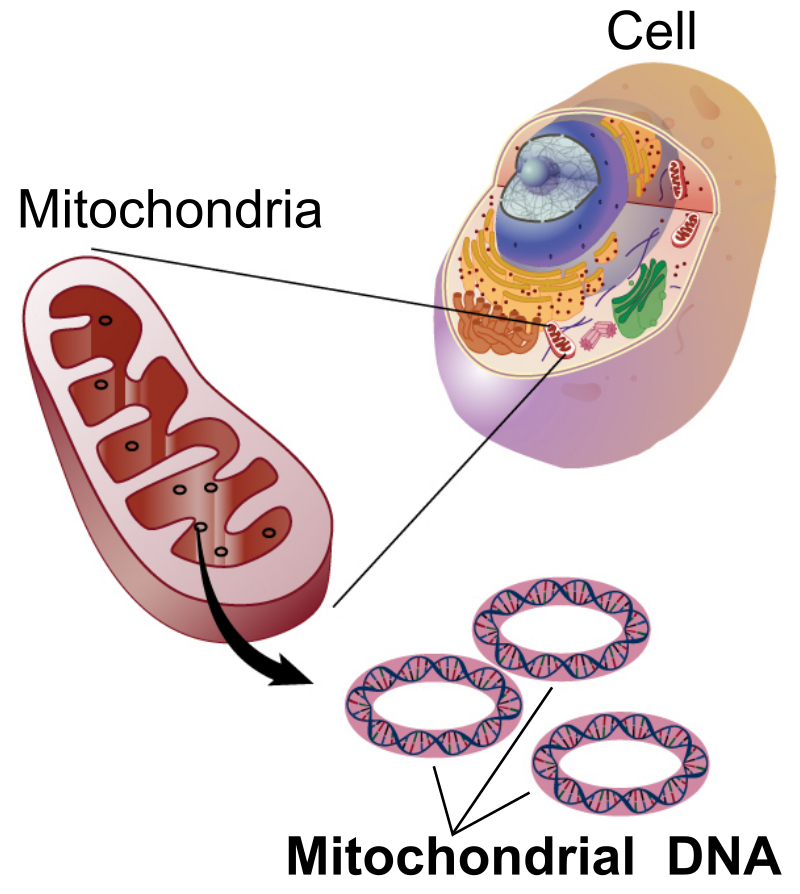 |
Inheritance of faulty mitochondrial genes (Maternal inheritance)
An individual’s mitochondria are generally only inherited from his or her mother. A MtDNA copy is passed down entirely unchanged, through the maternal line. Males cannot pass their MtDNA to their offspring although they inherit a copy of it from their mother. A change (mutation) in one of the mitochondrial genes that makes it faulty, can therefore be passed by the mother to a child in her egg cells. This pattern of inheritance is therefore often referred to as maternal inheritance. The egg cell contains many mitochondria, each having on average one to several copies of the mitochondrial genes. If a particular gene in every mitochondrion in an egg cell is faulty, the disruption to energy production would be so severe that the early embryo would probably not survive. The fact that a person survives to birth and is affected with a mitochondrial condition means that they must have inherited two types of mitochondria from his or her mother: some containing the working copy of the gene, and some containing the faulty gene. The working copy of the mitochondrial gene will still be able to send the right instructions, but the amount of energy produced may be impacted and may result in a mitochondrial condition.On the other hand, having some mitochondria with a faulty gene may cause no problem at all.
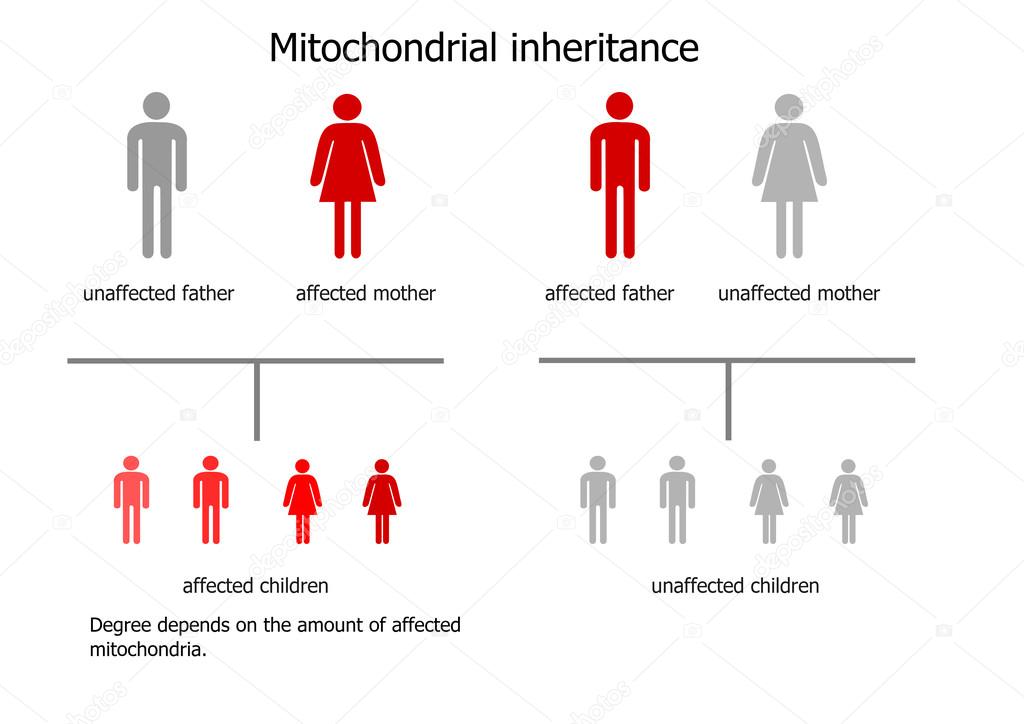
This phenomenon should not be confused with maternal effect of genes which is also called maternal inheritance.
Three Parent Babies
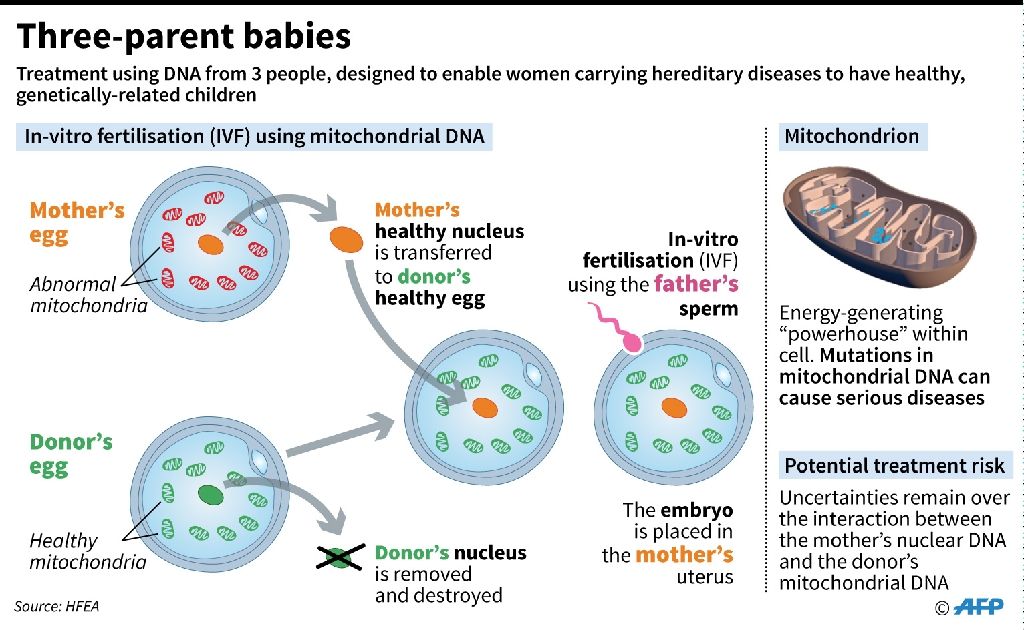
Three-parent baby concept was first introduced by John Zhang and his team at the New Hope Fertility centre in New York City,2016.It’s the process of producing human offspring from the genetic material of one man and two women through the use of assisted reproductive technologies, specifically mitochondrial manipulation (or replacement) technologies and three-person in-vitro fertilization(IVF). In general, the reproductive technologies used to produce three-parent babies focus on replacing or otherwise reducing the effects of mutations that occur in the DNA of cellular organelles known as mitochndria, which reside in the cell cytoplasm.
Plastid Inheritance
Plastids are self duplicated and have some amount of DNA and plays an important role in cytoplasmic inheritance. Plastids have green pigments called chloroplasts. Chloroplasts contain a unique circular DNA (cp DNA) in the stroma that is completely different from the nuclear genome. Plastid inheritance means the inheritance of plastid characteristics due to plasma genes located in plastids. Plastid inheritance was first described by C. Corens (1908) in the four o’clock plant, Mirabilis jalapa.
Leaf variegation in Mirabilis Jalapa
 Leaves of Mirabilis jalapa may be green, white or variegated and some branches may have only green, only white or only variegated leaves. Correns made reciprocal crosses in all combinations among the flowers produced on these three types of branches. Variegation means the presence of white or yellow spots of variable size on the green background of leaves.Thus it forms the mosaic pattern of coloration on a leaf. Due to certain inheritable defects chloroplast of all cells or some cells of leaf often are unable to synthesize the chlorophyll pigments. Such cells remain non- green and form white or yellow coloured leaf, or white or yellow patches, interspersed with areas containing normal green cells with healthy chloroplasts.
Leaves of Mirabilis jalapa may be green, white or variegated and some branches may have only green, only white or only variegated leaves. Correns made reciprocal crosses in all combinations among the flowers produced on these three types of branches. Variegation means the presence of white or yellow spots of variable size on the green background of leaves.Thus it forms the mosaic pattern of coloration on a leaf. Due to certain inheritable defects chloroplast of all cells or some cells of leaf often are unable to synthesize the chlorophyll pigments. Such cells remain non- green and form white or yellow coloured leaf, or white or yellow patches, interspersed with areas containing normal green cells with healthy chloroplasts.
Variegation may be produced by
- Some environmental factor
- Some nuclear genes
- Plasma genes in some cases

- When flowers from green branch were used as female parent, all the progeny were green irrespective of the phenotype (green, white or variegated) of male parent.
- Similarly, progeny from crosses involving flowers bloomed on white branches as female parent were all white irrespective of the phenotype of male parent.
- But in progeny from all crosses involving flowers born on variegated branches as female parent, all the three types i.e. green, white and variegated individuals were recovered in variable proportions.
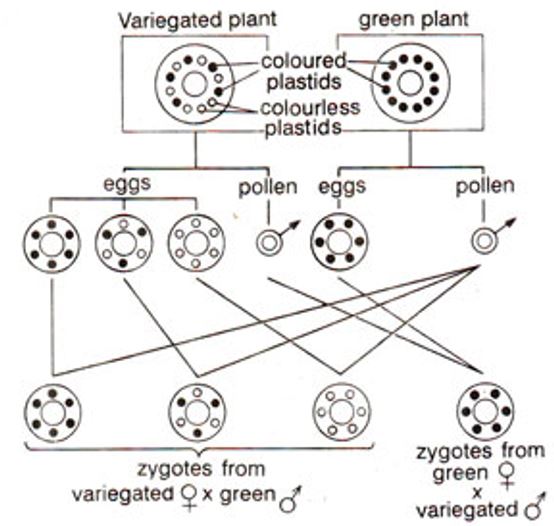
- So, the results clearly indicates that leaf phenotype of the progeny is the same as that of the female parent. The phenotype of male parent did not contribute anything to the progeny.
- This phenomenon is referred to as uniparental transmission. Again, the results of the crosses of Mirabilis jalapa cannot be explained by sex-linkage.
- The inheritance of different leaf colours in Mirabilis jalapa might be explained if the plastids are somehow autonomous and are never transmitted through male parent. For an organelle to be genetically autonomous, it must be provided with its own genetic determinants that are responsible for its phenotype.
Inheritance of Iojap Trait in Maize |
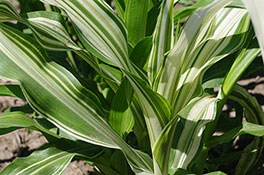 |
- In maize plant, iojap is a trait which produces green and white stripped leaves.
- This trait is controlled by a recessive chromosomal gene (ij) when present in homozygous state.
- The name iojap was derived from ‘Iowa’ state (USA), the source of maize strain.
- When a normal plant with green leaves used as a female parent is crossed (Fig. 22.4) with iojap parent, the offspring will be green leaved.
- Again, when a reciprocal cross is made between a normal green plant (used as male) and iojap plant (used as female).The offspring will be of three different types: colourless, stripped and normal green.
- In iojap plants, green and white stripped trait of leaf is inherited from the female parent due to maternal inheritance. It seems that iojap plants contain two types of plastids— normal green, and abnormal iojap plastids.

- During the formation of egg cells plastids are randomly distributed in the egg cells.
- If the egg cell receives normal green plastids it will produce green leaved plants irrespective of which plant acted as pollen parent.
- If the egg cell receives abnormal colourless plastids, it will give rise to white leaved plants.
- If the egg cell receives both green and abnormal plastids it will give rise to plants with green and white stripped leaves.
Utility of extra-nuclear genetic system
The advantage of many self-reproducing cellular organelles in eukaryotes are –
- It prevents total loss of organelles due to a single mutations in genes.
- It provides a reservoir of cytoplasmic mutations which could become more useful under adverse environmental conditions.
References & Other Links
This article is completely based on by the lecture of Dr. Ritah Sarah Borna, Assistant Professor, Department of Botany, University of Dhaka.
Some info and pictures have been added by the author. Any mistake, error, misinformation and other related things found in this article are only author’s to blame.
- Genetics by P.S Verma, Department of zoology, Meerut College.
Written by
Abida Latif Tamanna, B.S. (Hons), Department of Botany, University of Dhaka
 Plantlet The Blogging Platform of Department of Botany, University of Dhaka
Plantlet The Blogging Platform of Department of Botany, University of Dhaka
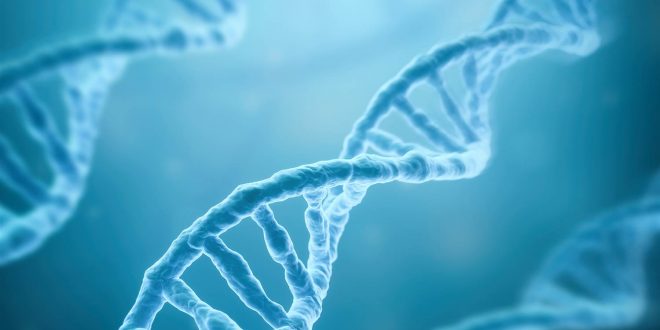





It must give good read feel to any reader. So conscious and neat organisation of datas push me to complete the whole. Thank you so much.
Thank you for your kind comment,Taki.